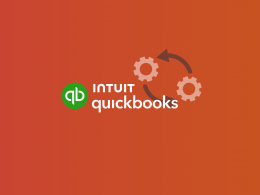As a business owner, you need to understand the concept of interest expense because it directly impacts your company’s financial health. Interest expense affects your profits and how money moves in and out of your business. Understanding this helps you make smart choices about loans, managing debt, and planning where you put your resources. It also lets you see the cost of borrowing money, helping you negotiate better terms with lenders and organize your finances wisely.
Below, we’ll break down interest expenses for you.
What’s interest: learning the basics
Before we get to interest expense, lets recall what interest is.
Interest is like the fee you pay for borrowing money. When you borrow, you’re essentially using someone else’s funds, and interest is the cost you pay for doing it.
There are two main types: simple and compound. Let’s look at the difference between them.
Simple interest
Simple interest is a straightforward way of calculating the cost of borrowing money. It’s like a flat fee determined only by the initial amount of money you borrowed, known as the principal. The interest doesn’t change over time; it’s a fixed percentage of the principal. So, if you borrow $100 at a 5% simple interest rate, you’d pay $5 in interest for every year you have the loan. It’s a linear and predictable way of understanding the cost of using borrowed funds without any compounding factors.
Compounding interest: loan interest on steroids
Compound interest is a bit more intricate than simple interest. It’s like interest on steroids – not only does it calculate interest based on the initial amount you borrowed (the principal), but it also considers the already accumulated interest over time.
Here’s how it works. Imagine you borrowed $100 at a 5% compound interest rate. In the first year, you’d pay $5 in interest, just like simple interest. However, in the second year, you’re not just paying interest on the initial $100. You’re paying interest on the total amount, including that $5 interest from the first year. This compounding effect continues, and over time, the interest can grow faster than with simple interest.
In simpler terms, compound interest is like interest building on top of interest, creating a snowball effect that can lead to a higher overall cost of borrowing over the long term.
What’s interest expense?
Now, to the interest expense. If interest is the actual cost of borrowing, interest expense is how a company handles interest payments in accounting.
When a company borrows money, it incurs interest expense over time (because they spends money to pay this interest). They record this expense in the company’s financial statements according to accounting principles, reflecting the ongoing cost of using borrowed funds.
Accounting for interest expense is crucial for a business because it provides an accurate picture of its financial obligations and helps make informed decisions about borrowing and managing debt.
Related: You might also want to learn more about other kinds of expences, such as billable expences, for example.
Accrued interest: accounting for interest expense
Speaking of interest expenses, we need to mention accrual interest.
Accrued interest refers to the gradual accumulation of interest over time, often periodically, even if it isn’t immediately paid or received. (It contrasts with cash-based accounting, where you only record transactions when cash changes hands.)
In the context of interest expense, accrued interest is crucial because it represents the interest that has been incurred but not yet paid.
For example, a company has a loan with accrued interest at the end of a financial period. It means they’ve accumulated an obligation to pay interest, even if the actual payment hasn’t yet been made.
Understanding accrued interest is essential in accurately reflecting a company’s financial position. In financial statements, interest expense is recorded based on accrual accounting principles. It means that even if the interest payment is due in the next period, the company recognizes the expense in the period when the interest was incurred.
Accurate tracking of accrued interest is vital for businesses to present a fair view of their financial obligations. It helps in budgeting, forecasting, and overall financial management, as it provides a more accurate representation of the company’s ongoing financial commitments, especially those related to borrowing and interest payments.
How’s interest expense calculated: breaking down the Interest expense formula

Interest expense is calculated using a straightforward formula that considers three main components: the principal amount borrowed, the interest rate charged, and the time the borrowed funds are used. The formula for interest expense is as follows:
Interest Expense = Principal × Interest Rate × Time
- Principal is the initial amount borrowed or the outstanding balance of the loan.
- Interest Rate is the cost of borrowing, usually expressed as an annual percentage.
- Time is the duration for which the borrowed funds are used, typically measured in years.
The formula multiplies these three components to determine the total interest expense incurred over a specific period. It’s important to note that the time component should be in the same unit as the interest rate (e.g., if the interest rate is annual, time should be in years).
How to calculate interest expenses with a simpler formula

For a quick calculation, a simplified formula can be used:
Interest Expense = Principal × Interest Rate
This simplified version is suitable for situations where the time period is one year. For more precise calculations over different time frames, the comprehensive formula with the time component is employed. Understanding and applying this formula is fundamental for businesses to gauge the cost of borrowing and make informed financial decisions.
How to calculate interest expense step by step
Well, the formula is, actually, the final stage of the interest expense calculation. Before you get there, you need a couple of preparatory steps. Let’s go through them real quick.
- Gather necessary financial statements.
First thing, collect your financial statements, specifically your balance sheets and loan agreements. These documents provide crucial information about your company’s financial position and the terms of any loans. - Identify principal amount
Locate the principal amount – the initial sum borrowed, typically found under the liabilities section in your balance sheet. It’s the foundation for your interest expense calculation. - Determine interest rate
Extract the interest rates associated with your loans from the corresponding loan documentation. The interest rate is the cost of borrowing and a key factor in the interest expense formula. - Define time period
Identify the duration for which you’re calculating interest. It can be a specific time frame, such as a month, quarter, or year. Ensure consistency between the interest rate and the time period (e.g., if the interest rate is annual, use a yearly time period). - Plug values into the interest expense formula.
Apply the interest expense formula we provided above. Insert the values you’ve gathered: principal amount, interest rate, and time period, and finalize the calculation.
Importance of accuracy when calculating interest expense
If you calculate interest expense inaccurately, it can have profound effects on your business finances, influencing various aspects of your financial management. Here’s a breakdown of how inaccuracies can impact your business
Misleading financial statements
Inaccurate interest expense calculations can lead to misleading financial statements. In turn, it can provide a distorted picture of your company’s profitability, financial health, and overall performance. Potential investors, creditors, or stakeholders may decide based on flawed information.
Budgeting and planning challenges
A miscalculation in interest expense affects your ability to budget effectively. Without a precise understanding of your interest obligations, you may allocate resources improperly, leading to budget shortfalls or unexpected financial constraints.
Strategic decision-making
Inaccurate interest expense figures can hinder your ability to make strategic financial decisions. Whether it’s determining the feasibility of new projects, evaluating investment opportunities, or deciding on optimal debt levels, flawed calculations can lead to suboptimal choices.
Negotiation and communication issues
When dealing with lenders or creditors, accurate interest expense figures are crucial. Inaccuracies may affect your ability to negotiate favorable loan terms or communicate your financial position effectively. Lenders rely on precise financial data when assessing risk and determining interest rates.
Cash flow challenges
Inaccurate interest expense calculations can disrupt your cash flow management. If you underestimate your interest obligations, you might face unexpected cash outflows, impacting your ability to cover other essential expenses or invest in growth opportunities.
Compliance and legal risks
Incorrectly reported interest expenses can lead to compliance and legal risks. Regulatory bodies and tax authorities rely on accurate financial reporting. Inaccuracies may result in penalties, audits, or legal consequences.
To mitigate these risks, one might want to implement a proactive approach to finance management (including interest expenses). Here are some best practices to consider.
- Establish robust financial controls
Implementing robust financial controls is the foundation of accurate interest expense calculations. It involves creating standardized procedures for recording and reconciling financial transactions, including data entry, verification, and validation guidelines to minimize errors. - Regular review of financial data
Conducting regular financial data reviews, such as balance sheets, loan agreements, and other relevant financial documents – can help identify any discrepancies or anomalies. This way, you can catch errors early and ensure that your financial records accurately reflect your company’s financial position. - Utilize accounting tools
Leverage advanced accounting tools to streamline and enhance the accuracy of your calculations. Modern accounting software possesses features that automate calculations, reducing the likelihood of manual errors. These tools also facilitate real-time financial data tracking, providing a comprehensive overview of your company’s financial health. - Employ expertise
Rely on the expertise of financial professionals, such as accountants or financial analysts. These professionals bring knowledge and experience to your financial management practices. Their insights can uncover nuances in interest expense calculations, ensuring compliance with accounting standards and regulatory requirements. - Regular reconciliation
Implement a systematic process for reconciling your financial records. Reconciliation involves cross-verifying different sets of data to ensure consistency and accuracy. Regular reconciliation not only identifies errors but also serves as a preventive measure, enhancing the reliability of your financial information. - Training and education (personal courses, etc.)
Invest in training your finance team on the intricacies of interest expense calculations. Educating your team on the importance of accuracy and providing ongoing training on financial reporting standards enhances their ability to execute precise calculations. - External audits
Consider engaging external auditors to conduct periodic audits of your financial statements. External audits provide an impartial evaluation of your financial processes and can offer valuable insights into areas for improvement. This external validation enhances the credibility of your financial reporting.
Leveraging accounting software for interest expense calculation
We’ve already touched upon how accounting software can help ensure you accurately calculate your interest expenses (and much more than that). Now, let’s dive deeper into the role accounting software plays and the specific features to seek.
Automated calculations
One of the primary advantages of accounting software is its ability to automate complex calculation processes. Advanced algorithms within the software streamline various calculations, including interest expense, minimizing the risk of manual errors. Automation saves time and ensures a higher degree of accuracy in the results.
Real-time data tracking
Modern accounting software provides real-time data tracking capabilities, allowing businesses to monitor changes in principal amounts, interest rates, and time periods as they occur. This real-time visibility empowers financial teams to make informed decisions promptly, adapting to dynamic market conditions or evolving business needs.
User-friendly experience
Look for accounting software with user-friendly interfaces that simplify the input and retrieval of financial data. Intuitive dashboards and easy-to-navigate menus facilitate a seamless user experience, reducing the learning curve for employees and enhancing overall operational efficiency.
Integration with financial systems
Opt for software that seamlessly integrates with other financial systems within your organization, ensuring a cohesive flow of data across various departments and minimizing the risk of discrepancies between different records. Integration promotes consistency and accuracy in interest expense calculations.
Integration with payment systems (like PayPal, GoCardless, Stripe, etc.)
Choose accounting software that integrates seamlessly with payment systems. This feature streamlines the reconciliation process, linking financial transactions directly with corresponding payments. It enhances accuracy in interest expense calculations and provides a comprehensive overview of financial transactions, reducing the likelihood of errors associated with manual data entry.
Customization options
Every business has unique financial requirements. Accounting software with customization options allows you to tailor the system to align with your specific interest expense calculation needs. Customize fields, reports, and workflows to match the intricacies of your financial processes, ensuring a personalized and precise approach.
Comprehensive reporting
Robust accounting software provides comprehensive reporting capabilities. Generate detailed reports on interest expense, including breakdowns of principal amounts, interest rates, and time periods. These reports help internal decision-making and serve as valuable documentation for audits and compliance.
Security measures
Prioritize software with robust security measures to safeguard sensitive financial data. Encryption, access controls, and regular software updates are crucial for a secure accounting system. A secure platform instills confidence in the accuracy and confidentiality of your financial information.
Scalability
Consider the scalability of the accounting software to accommodate the growth of your business. As your operations expand, the software should seamlessly scale to handle increased data volume and complexity. Scalability ensures that your interest expense calculations remain accurate and efficient as your business evolves.
Conclusion
As you can see, our exploration into interest expense unfolded a crucial narrative for businesses navigating the financial landscape. Understanding how to calculate interest expense emerged not just as a requirement but a strategic imperative for sustained financial health and growth.
From unraveling the distinctions between simple and compound interest to deciphering the role of interest expense as a tangible representation of borrowing costs, our guide delved into the core principles. The step-by-step process elucidated how to calculate interest expense, emphasizing its pivotal role in financial decision-making.
Our journey extended to the repercussions of inaccuracies in interest expense calculations, impacting financial statements, budgeting, and strategic choices. We spotlighted the tools that streamline these calculations, emphasizing the indispensable role of accounting software. This technological ally not only automates calculations but also offers real-time tracking, user-friendly interfaces, and integration with financial and payment systems.
In closing, our exploration equipped us with a holistic understanding of financial intricacies. Embracing accurate interest calculations and leveraging advanced tools fortifies businesses, ensuring compliance, strategic growth, and stability. As we navigate the financial landscape, let the precision in calculating interest expense be our compass, guiding us toward a future marked by financial acumen and prosperity.







.png)
